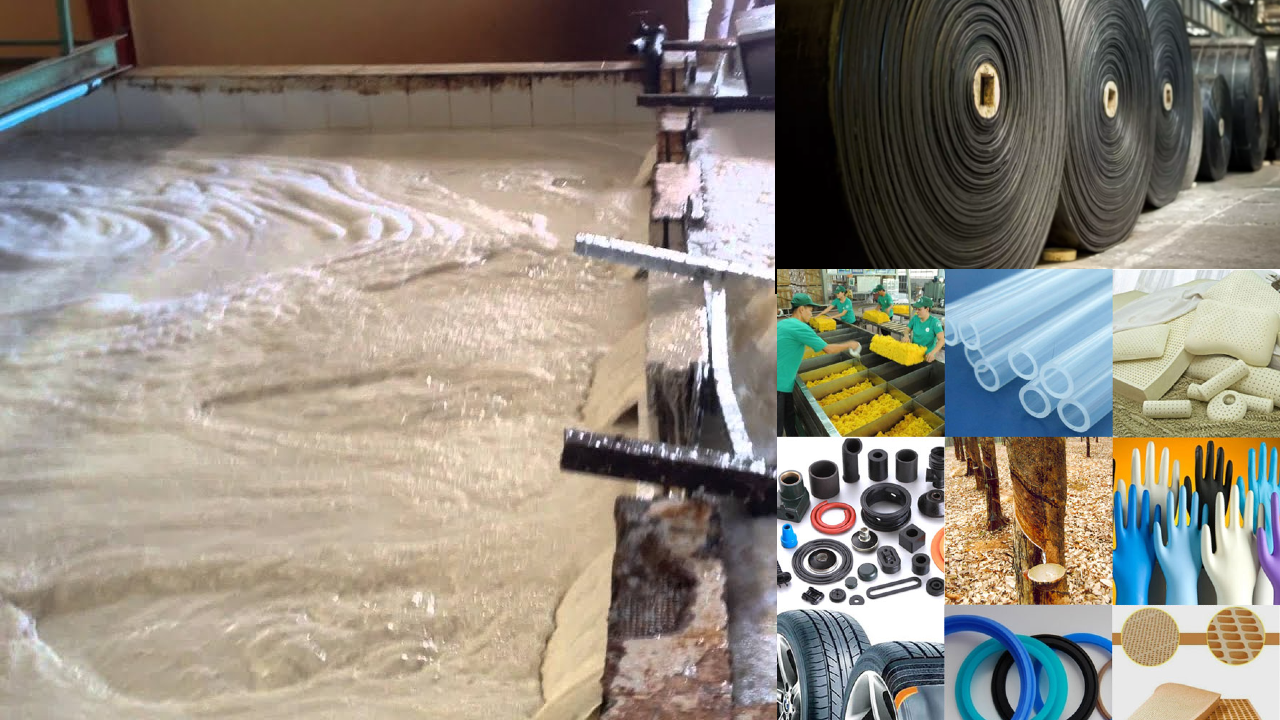Industry
- Agarbatti (incense) industry
- Textile Industry
- Pharmaceutical Industry
- Cosmetics Industry
- Food Industry
- Animal Feed Industry
- Paper Industry
- Rubber Industry
- Paint and Varnish Industry
- Tobacco Industry
- Oil and Gas Industry
- Leather Industry
- Jute Industry
- Plywood Industry
- Adhesives Industry
- Mosquito coils
Rubber Industry

Latex creaming
Coagulation process is the aim of creaming is to produce latex and with increased values of such parameters this means that creaming is more effective using tamarind seed powder than using sodium alginate. Given the fact that tamarind seeds powder are renewable materials which can be grown agriculturally to satisfy desired demand, the prospects for using them seems more attractive than using sodium alginate.
Process for using tamarind seed (kernel) powder in rubber latex creaming industry:
The Tamarind kernels are grounded to obtain tamarind seed (kernel) powder, where each 3.0 g of the tamarind seed powder is dispersed in distilled water (100 cm3) (pH 7.88) in a beaker and the dispersion will be boiled on a hot plate for 1 h with continuous stirring, thus yielding a solution. 0.75 cm3 of the tamarind seed powder solution (creaming agent) which will be further transferred into a 500 cm3 beaker containing 250 cm3 of the latex. The beaker will be covered and left to stand undisturbed in a safe place for 48 hours. After 48 hours phase separation takes place and water being slightly denser than rubber existed at the bottom of the beaker thus rubber particles will be swelled and rise to the top and separated.
Creamed Latex
The processing of latex into creamed concentrates involves the mixing of a creaming agent such as ammonium alginate or cooked tamarind seed powder with properly preserved field latex and allowing the latex to separate into two layers, an upper layer of concentrated latex and lower layer of serum containing very little rubber. The lower layer is removed, leaving the latex concentrate of 50%-55% drc which is tested, packed and marketed.

 Rubber Industry
Rubber Industry